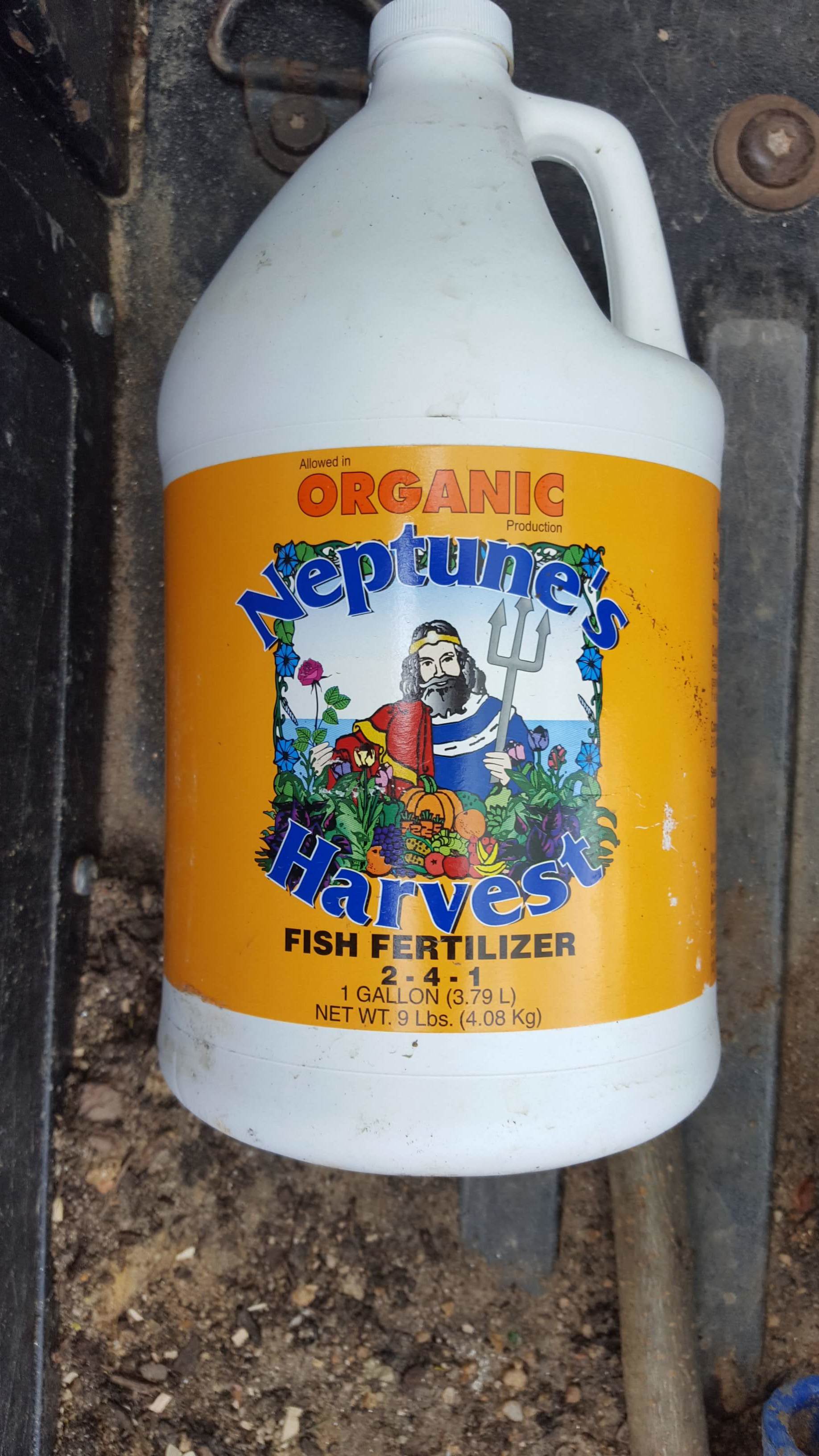The sense of accomplishment after getting all of the Spring plants in the ground is hard to beat. It’s a beautiful sight: the vibrant greens and purples of the lettuce leaves, the tiny curly-qs of the pea shoots, the bright pink stems of the radishes about to bulb up. But after a few weeks, those colors might have faded and your plants might not looks so fresh. What’s a gardener to do?
To keep our plants healthy and growing with vigor all season long, we use a product called fish emulsion. Fish emulsion is made of ground and fermented by-products from the seafood industry. Much like the rice hulls we wrote about last month, fish emulsion is made of materials that would otherwise go to waste.
High in ready to use nitrogen and other nutrients, this organic fertilizer gives our seedlings an extra boost. You can read the general nutrient break-down of fish emulsion and other fertilizers by the N-P-K number. The N-P-K number provides the percentage by weight of nitrogen to phosphorus to potassium, the three major nutrients required for plant growth.
We apply this fast acting, liquid fertilizer to all of our transplants to help them acclimate to their new homes and help them grow quickly early in the season. We may apply a second helping a few weeks later to plants that look a little droopy due to insufficient watering or nutrients. We also focus particularly on plants in the Brassica family, such as kale, cabbage, and broccoli, which can be heavy feeders.
So how can you use fish emulsion at home? Most garden centers will carry a few brands of fish emulsion or fish fertilizer; these will be heavily concentrated and will need to be diluted. In a sprayer or watering can, add two to three tablespoons of fertilizer for each gallon of water (double check the instructions on the label as it will vary depending on brand, nutrients, and concentration). The resulting mixture should look a little murky but should not be thick. You can apply fish emulsion by watering the plants with the mixture as you would normally, or by spraying it over the leaves as you would with a foliar fertilizer. Applying fish emulsion can be a bit smelly, but there are products that have been “deodorized” with wintergreen or lavender. We recommend trying these out if you want to apply fish emulsion on your houseplants indoors!


